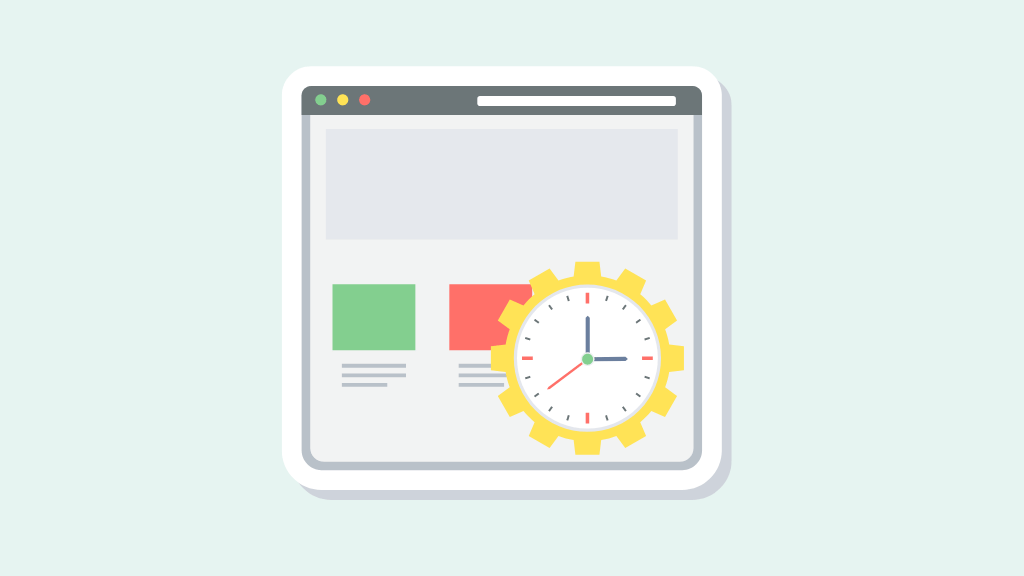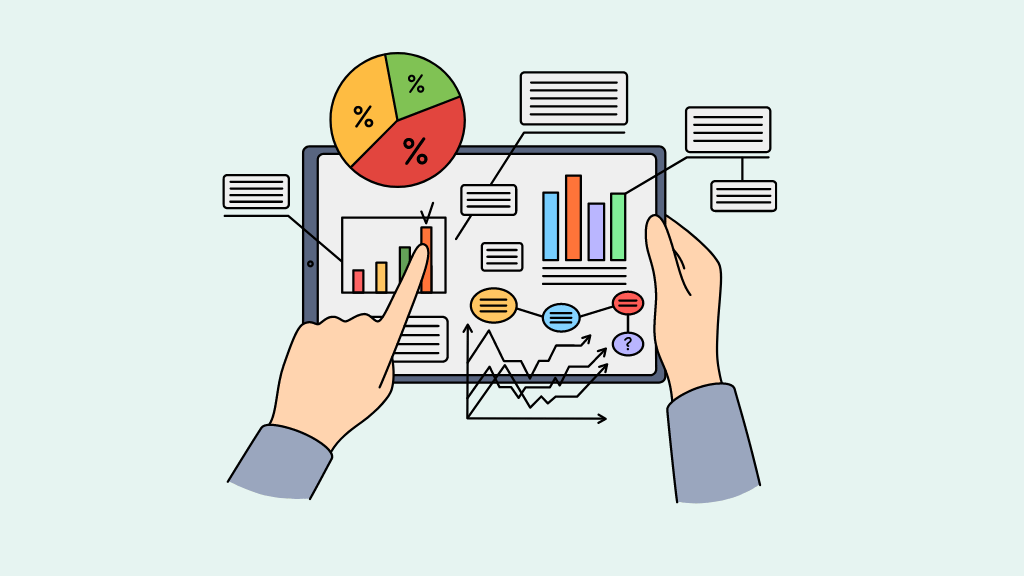Page load time is an important parameter that affects your entire site’s performance. Slow website load times are a proven way to lose visitors. People are becoming increasingly impatient, and they will leave your site if it does not load within a few seconds.
Studies show that even a one-second delay in load time can result in a 7% decline in conversions, 11% fewer page visits, and 16% worse customer satisfaction.
But don’t worry!
We’ve created a list of 14 eye-opening statistics to help you prioritize site speed optimization. These statistics will lead you to reconsider the performance of your website and provide the motivation you need to improve loading times.
Let’s Begin!
What Is Website Load Time?

Website load time, also known as page load time, is the time it takes for a website or web page to fully load and show ‘on-screen’ when a user wishes to access that site. Simply put, it is the rate at which a web page’s content is shown when a user clicks on the site.
Why Page and Site Speed Statistics Matter?
Page and site speed statistics are important for many reasons, but here are some key reasons why you should always maintain good performance KPIs on your site:
a. User experience: Faster loading times enhance the user experience by minimizing wait times and irritation. Users are more likely to interact with and return to a site that loads swiftly and smoothly.
b. Conversion rates: Slower page speeds lead to increased bounce rates and reduced conversion rates. Increasing speed may lead to more conversions, whether it’s making a purchase, signing up for a subscription, or filling out a form.
c. SEO: Search engines such as Google use page speed as a ranking factor. Websites that load quickly are more likely to appear higher in search engine results pages, thereby increasing organic traffic to your website.
d. Core Web Vitals: In 2020, Google introduced the Core Web Vitals, a collection of three measures that assess a webpage’s performance, interaction, and visual stability. They are regarded as ranking criteria for search engine optimization (SEO), thus anything that improves website performance will help it rank higher in search results and give a better user experience.
e. Mobile users: As the number of mobile devices grows, page performance becomes increasingly important. Mobile consumers expect quick page loads, and search engines prioritize mobile-friendly websites in their ranks.
f. Outrun the competition: A faster website may provide you an advantage over competitors while also improving brand perception. Customers will choose to buy from your website rather than anywhere else.
g. Cost efficiency: Shorter loading times may also result in cost savings. Websites with optimized performance use fewer server resources and bandwidth, which can lead to cheaper hosting costs.
14 Site Speed Statistics

Here are the 14 site speed statistics that will help you understand how your website’s load time may affect its performance, particularly conversion rates.
1. The average website takes 8.6 seconds to load on a mobile device.
The desktop average time is 2.5 seconds.
It’s important to note here that mobile devices are often much slower than laptops or tablets. That means you should focus more on page performance for your site’s mobile version.
Did you know? Website speed is measured in a variety of ways, including the time it takes for a single page to load vs the time it takes for a complete website to fully render. A whole webpage takes much longer to load.
2. The average page load time for Google’s top-ranked sites is 1.65 seconds.
If you want to rank on the top page of Google, your site must be fast, especially within one or two seconds. That’s because page speed has a big influence on Google SEO.
3. 83% of web users believe websites load in three seconds or less.
We recently looked at how quickly your website has to load to rank on Google’s first page. Even without Google, you want your site to load in three seconds or less. Otherwise, you risk losing a lot of traffic, which leads us to the next page speed statistic.
4. If your page takes three seconds to load, your bounce rate will increase by 32%.
A bounce rate is the percentage of visitors that leave your website without accessing any further pages. A high bounce rate may indicate that your website does not give value or is too sluggish.
A high bounce rate is not good for search engines, and your rankings will most certainly suffer. Website loading speed has a big influence on bounce rate.
According to Google, when the page load time increases from one to three seconds, the bounce rate rises by 32 percent.
5. Pages that take one or two seconds to load have an average bounce rate of 9%, but those that take five seconds have an average bounce rate of 38%.
Bounce rate, or the percentage of site visitors that leave quickly after entering, is greatly affected by page speed. Just three seconds of extra loading time can increase your bounce rate by approximately 30%.
6. Nearly 70% of users believe that an online store’s site speed affects their decision to buy from that company.
If you sell things online, having quick page load times is very important. You want people to come to your website and buy from you, but as this site speed stat indicates, many people will be discouraged from purchasing if it loads slowly.
7. 64% of online customers who have a negative user experience on a website will go to another seller to shop.
We recently observed how poor page speeds may make customers choose not to buy from you. However, the majority of those customers will go a step further: they will not only be less likely to buy from you, but they will also go straight to one of your competitors and buy from them instead.
8. Half of the online users surveyed said they prefer to skip animation and video in exchange for faster load speeds.
When creating a website, it’s simple to imagine that flashier animations and interesting videos will attract users. This is typically the case. However, be cautious about doing too much. If you rely heavily on videos and animations, your site may suffer significantly.
According to this data, users support quicker load times over movies and animations. So, if you have to choose between the two, page speed with a minimal design is the obvious choice.
9. Conversion rates drop by 2.11% for each extra second of page load time.
We’ve established that page speeds of one or two seconds are ideal, but it may not seem like much of an issue if your load times are only a second or two longer. However, as this statistic shows, even a single second might lose you a lot of conversions.
10. 44% of online shoppers tell others about their negative website experiences.
poor page speeds affect not only people who visit your website but also those who haven’t yet viewed it. That’s because individuals who visit your site and get irritated by poor speeds are more likely to tell others about it, stopping such people from visiting in the first place.
Needless to say, this reduces your sales drastically, which is just another reason to enhance your page performance.
11. The chance of a bounce increases by 32% as the page load time increases from 1 to 3 seconds.
We mentioned this data before, but it highlights how important every second is while working on site performance. This number is provided by Google, therefore you can use it for SEO purposes when targeting their search algorithm.
12. The top 10 e-commerce sites in the United States have an average page load time of 1.96 seconds.
If you own an e-commerce website, you know how competitive the industry is. That is why this data is important: understanding site speed for e-commerce giants may provide you with goals to aim for.
Also, understanding that customers dislike dealing with poor loading times means you should seriously consider improving your website.
13. Page load speed is one of the top 20 Google ranking factors.
While Google has never openly published its ranking variables, marketers and analysts have spent years narrowing down the top ones. Site speed is one of the most important variables in determining how your pages rank.
Given what we know about slow websites, this is not surprising. Google aims to provide the greatest results for users, so it will naturally prioritize websites that load quickly.
14. 79% of buyers who are dissatisfied with site performance say they will not return to the site to buy again.
Buyer behavior. You not only lose early sales, but you also miss a chance at long-term conversions.
Keeping up with website maintenance and page optimization is essential for attracting and keeping customers. If you want to ensure that your site runs smoothly, working will do the trick with no additional stress.
Conclusion
The site speed statistics we mentioned above have made it very clear how speed is important to a website’s success. Even little improvements in website load speed will help you reduce bounce rates, increase conversion rates, and move up the search engine ranks.
It is time to take action. Take these statistics as a wake-up call and prioritize site speed in your digital strategy. Your customers, search engine rankings, and bottom line will all appreciate it.
FAQs
1. Why is website speed so important?
Slow loading times annoy users, increase bounce rates, reduce conversions, and decrease search engine results. Faster sites improve user experience, increase engagement, and generate more sales/leads.
2. Does site speed affect search rankings?
A: Yes, faster-loading websites typically score better in Google search results. 52% of marketers said that faster web pages help their SEO efforts.
3. Is there a relationship between website speed and bounce rate?
Answer: There is a strong relationship between site speed and bounce rate. Slower sites tend to have greater bounce rates because people are more inclined to leave a page that takes too long to load.
4. How can I improve my site load faster?
Optimise pictures, minify code, use browser caching, use a content delivery network (CDN), and think about including performance-enhancing techniques like lazy loading, code splitting, and server-side rendering.




